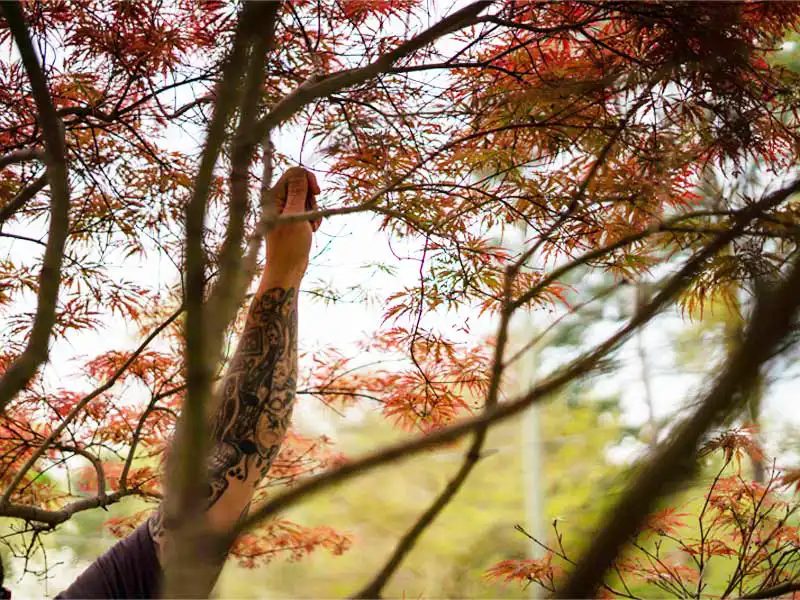Plant Health Care Services
in Durham
Ensuring the health of your trees and shrubs goes beyond simple maintenance—it’s about creating a sustainable environment where healthy plants thrive. At Broadleaf Tree & Shrub, the leading provider of plant health care services in Durham, we specialize in proactive strategies that keep landscapes thriving. Our proactive and holistic approach to tree and shrub care strengthens plant resilience while minimizing the need for reactive treatments.
What is Plant Health Care?
Plant health care (PHC) is a holistic approach and proactive strategy focused on maintaining the overall well-being of trees, shrubs, and other outdoor plants. It combines monitoring, preventive measures, and targeted interventions to promote vitality and prevent issues before they escalate.
Key Components of Plant Health Care
Effective plant health care involves a range of practices tailored to your landscape’s needs. Our plant health care services in Durham and the surrounding areas deliver expert tree care and shrub solutions that include:
Integrated Pest Management
As part of our plant health care program, our integrated pest management, a key part of plant health PHC, delivers proactive pest control that keeps damaging insects in check before they threaten your landscape.
Disease Prevention
Regular inspections help identify early signs of diseases, allowing for timely interventions that protect plant health.
Nutrient Optimization
Customized nutrient plans ensure your plants receive what they need for robust growth and resistance to stresses.
Benefits of Plant Health Care
A well-maintained landscape enhances curb appeal, increases property value, and contributes to a healthier environment. Our professional plant health care services in Durham offer the following benefits.
Urban and suburban trees often struggle due to compacted soil, limited nutrients, and environmental stressors. A plant health care program mitigates these challenges, allowing plants to live longer, healthier lives.
Through consistent plant health care, we build resilience in your landscape plants, helping them withstand harsh conditions and thrive year-round.
Our plant health care methods prioritize natural solutions, minimizing environmental impact while supporting biodiversity in your yard.
Investing in plant health care prevents costly emergencies, making it a cost-effective choice for long-term landscape management.
Our Plant Health Care Program
A plant health care (PHC) program is a comprehensive, long-term plan blending expert tree care with proactive shrub maintainence. Unlike traditional approaches that rely heavily on pesticides and reactive treatments, our plant health care services prioritize soil health, proper cultural practices, and environmental balance to naturally support plant vitality.
Soil Analysis and Improvement
This is the heading
Nutrient Management
This is the heading
Pest and Disease Monitoring
This is the heading
Seasonal Inspections and Adjustments
This is the heading
Understanding Environmental Stress on Plants and Trees
Trees and shrubs in urban and suburban environments face numerous environmental challenges that impact their health and longevity. Unlike trees growing in natural forests, landscape trees are often subjected to compacted soil, pollution, inconsistent watering, and limited root space. Plant health care addresses these issues directly through:
Drought and Inconsistent Watering
Inconsistent moisture levels can weaken plants. Plant health care programs incorporate watering strategies to maintain optimal hydration.
Soil Compaction and Poor Root Growth
Compacted soil restricts root expansion, limiting access to water and nutrients. Our plant health care includes soil aeration to alleviate this common problem.
Heat Stress and Sun Scorch
Extreme heat can damage foliage. Through plant health care, we recommend shading and mulching techniques to protect vulnerable species.
Pest and Disease Vulnerability
Stressed plants are more susceptible to infestations. Regular plant health care monitoring helps catch and manage these threats early.
Pest and Disease Vulnerability Due to Stress
Stressed trees are more susceptible to insect infestations and fungal infections
Weakened trees attract borers, aphids, and scale insects
How We Address It:
Boost tree resilience through soil health and proper nutrition
Implement integrated pest management to control outbreaks naturally
Monitor for early signs of disease and act quickly to prevent spread
Why Choose Our Plant Health Care Experts in Durham?
When it comes to protecting your landscape investment, experience and expertise matter. BroadLeaf Tree & Shrub brings over 50 years of combined industry experience, ensuring your trees and shrubs receive the highest level of care.



Certified Arborists
Our team includes certified arborists skilled in advanced plant health care techniques.
Customized Solutions
We tailor plant health care programs to fit your specific property and plant species.
Proven Results
Our clients see noticeable improvements in plant vigor through our dedicated plant health care services.
Schedule Your Plant Health Care Services in Durham
With a focus on environmentally friendly strategies, our professionals in plant health care provide ongoing monitoring and care to prevent problems for your landscape plants. Whether you’re dealing with environmental stresses, soil deficiencies, disease control, or pest control concerns, our certified arborists can help.
BroadLeaf Tree & Shrub provides plant health care, tree removal, tree pruning, and shrub pruning throughout Durham, Raleigh, Morrisville, Apex, Cary, Hillsborough, Chapel Hill, and the surrounding communities of the Triangle.
Get started now by calling us at 919-632-3565 or filling out the contact form below to schedule your consultation.